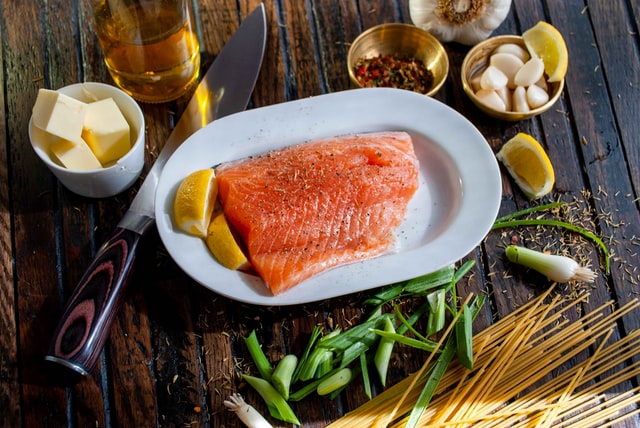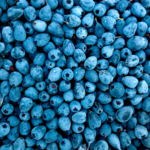The ketogenic diet has recently gained popularity.
This very low-carb, high-fat diet has been shown to help with weight loss, diabetes, and epilepsy in studies.
There’s also preliminary indications that it could help with malignancies, Alzheimer’s disease, and other illnesses.
Carbohydrates are typically limited to 20–50 grams per day on a ketogenic diet. While this may appear difficult, many healthful items can readily be incorporated into this diet.
On a ketogenic diet, here are 16 nutritious and healthy foods to eat.
Poultry and Meat
On a ketogenic diet, meat and poultry are considered staple foods.
Fresh meat and poultry are low in carbohydrates and high in B vitamins and minerals like potassium, selenium, and zinc.
They’re also high in high-quality protein, which has been demonstrated to help maintain muscle mass on a low-carb diet.
In one study, older women who ate a high-fat, high-carb diet had HDL cholesterol levels that were 8% higher than those who ate a low-fat, high-carb diet.
If at all feasible, choose grass-fed meat. This is because grass-fed animals produce meat that contains more omega-3 fats, conjugated linoleic acid, and antioxidants than grain-fed ones.
Eggs
Eggs are one of the world’s healthiest and most adaptable foods.
Eggs are a good food for a ketogenic lifestyle because they include less than 1 gram of carbs and less than 6 grams of protein per large egg.
Furthermore, eggs have been proven to stimulate hormones that boost sensations of fullness and maintain blood sugar levels, resulting in lower calorie intake for up to 24 hours.
It’s critical to consume the entire egg because the yolk contains the majority of the nutrients. The antioxidants lutein and zeaxanthin, which help safeguard eye health, are among them.
Despite the fact that egg yolks are high in cholesterol, most people’s blood cholesterol levels are not affected by eating them. Eggs, in fact, appear to alter the structure of LDL, lowering the risk of heart disease.
Coconut Oil
Coconut oil contains a variety of qualities that make it ideal for a ketogenic diet.
It contains medium-chain triglycerides to begin with (MCTs). MCTs, unlike long-chain fats, are directly absorbed by the liver and converted to ketones or used as a quick source of energy.
Coconut oil has even been used to raise ketone levels in persons with Alzheimer’s disease and other brain and nervous system diseases.
Lauric acid, a somewhat longer-chain fatty acid, is the most abundant fatty acid in coconut oil. Coconut oil’s combination of MCTs and lauric acid has been mentioned as a possible contributor to long-term ketosis.
Furthermore, coconut oil may aid in the weight loss and reduction of abdominal fat in obese individuals. Men who consumed 2 tablespoons (30 cc) of coconut oil per day dropped an average of 1 inch (2.5 cm) from their waistlines without making any additional dietary modifications in one research.
Read this post for further information on the benefits of including coconut oil in your diet.
Fish and Seafood
Fish and shellfish are excellent keto foods. Salmon and other fish are high in B vitamins, potassium, and selenium while being low in carbs.
The carbohydrate content of different varieties of shellfish, on the other hand, varies. For example, whereas shrimp and most crabs are carb-free, other shellfish are.
While these shellfish can still be eaten on a ketogenic diet, it’s vital to keep these carbs in mind if you’re trying to stick to a strict carb limit.
Here are the carb counts for several popular seafood in 3.5-ounce (100-gram) servings:
- Clams: 5 grams
- Mussels: 7 grams
- Octopus: 4 grams
- Oysters: 4 grams
- Squid: 3 grams
Omega-3 fats contained in salmon, sardines, mackerel, and other fatty fish have been shown to reduce insulin levels and increase insulin sensitivity in overweight and obese adults.
Furthermore, regular fish consumption has been associated to a lower risk of disease and better mental health.
Aim for at least two seafood dishes per week.
Vegetables with Low Carbohydrate Content
Non-starchy veggies are low in calories and carbohydrates but high in a variety of nutrients, including vitamin C and a variety of minerals.
Fiber is found in vegetables and other plants, which your body does not digest and absorb like other carbohydrates.
As a result, pay attention to their digestible (or net) carb amount, which is equal to total carbs minus fiber.
The majority of veggies have a low net carbohydrate content. One serving of “starchy” vegetables such as potatoes, yams, or beets, on the other hand, could put you over your daily carb allowance.
Non-starchy veggies have net carb counts that range from less than 1 gram per cup of fresh spinach to 8 grams per cup of cooked Brussels sprouts.
Antioxidants included in vegetables help protect cells from free radicals, which are unstable chemicals that can cause cell damage.
In addition, cruciferous vegetables such as kale, broccoli, and cauliflower have been associated to a lower risk of cancer and heart disease.
Low-carb vegetables can be used to replace high-carb foods. Cauliflower, for example, can be used to make rice or mashed potatoes, zucchini can be used to make “zoodles,” and spaghetti squash is a natural substitute for spaghetti.
Cheese
Cheese is a nutrient-dense food that is very delightful.
There are thousands of different kinds of cheese. Fortunately, they’re all extremely low in carbs and high in fat, making them ideal for a ketogenic diet.
Cheddar cheese has 1 gram of carbohydrates, 7 grams of protein, and 20% of the RDI (Reference Daily Intake) for calcium in one ounce (28 grams).
Although cheese contains a lot of saturated fat, it hasn’t been linked to an increased risk of heart disease. Indeed, some research suggests that cheese may help prevent heart disease.
Conjugated linoleic acid, another lipid found in cheese, has been related to weight loss and improved body composition.
Furthermore, eating cheese on a daily basis may assist to slow the loss of muscular mass and strength that occurs as people age.
Over the course of a 12-week research, older adults who consumed 7 ounces (210 grams) of ricotta cheese per day exhibited gains in muscle growth and muscle strength.
Avocado
Avocados are extremely nutritious.
9 grams of carbs are found in 3.5 ounces (100 grams), or roughly half of a medium avocado.
7 of these are fiber, therefore it only has 2 grams of net carbs.
Avocados are abundant in a variety of vitamins and minerals, including potassium, a vital mineral that many people lack. Furthermore, consuming more potassium may make the transition to a ketogenic diet smoother.
Avocados may also help lower cholesterol and lipid levels.
People who ate a diet high in avocados had a 22 percent reduction in “bad” LDL cholesterol and triglycerides and an 11 percent increase in “good” HDL cholesterol, according to one study.
Cottage Cheese and Plain Greek Yogurt
Plain Greek yogurt and cottage cheese are high-protein foods that are good for you.
Despite the fact that they contain carbs, they can be consumed as part of a ketogenic diet.
Plain Greek yogurt has 5 grams of carbohydrates and 11 grams of protein in 5 ounces (150 grams). Cottage cheese has 5 grams of carbohydrates and 18 grams of protein in that amount.
Yogurt and cottage cheese have both been demonstrated to aid in the reduction of hunger and the promotion of feelings of fullness.
Either one is a delicious snack on its own.
For a quick and easy keto dessert, combine both with chopped nuts, cinnamon, and an optional sugar-free sweetener.
Olive Oil
Olive oil has a lot of heart-healthy properties.
It’s abundant in oleic acid, a monounsaturated fat that has been shown in numerous studies to reduce heart disease risk factors.
Furthermore, phenols, which are antioxidants, are abundant in extra-virgin olive oil. By reducing inflammation and enhancing arterial function, these chemicals help to protect heart health.
Olive oil has no carbs because it is a pure fat source. Salad dressings and healthy mayonnaise can be made with it.
Olive oil is best used for low-heat cooking or after meals have been cooked because it isn’t as stable as saturated fats at high temperatures.
Olives
Olives are similar to olive oil in terms of health advantages, however they are consumed in a solid form.
The major antioxidant in olives, oleuropein, has anti-inflammatory qualities and may help protect your cells from damage.
Furthermore, research show that eating olives can help prevent bone loss and lower blood pressure.
The carb content of olives varies depending on their size. However, fiber accounts for half of their carbs, resulting in a low digestible carb level.
Olives provide 2 grams of total carbohydrates and 1 gram of fiber in a one-ounce (28-gram) portion. Depending on the size of the olives, this equates to a net carb count of 1 gram per 7–10 olives.
Berries
Berries are an exception to the rule that most fruits are too heavy in carbs to be included in a ketogenic diet.
Berries are strong in fiber and low in carbohydrates.
In fact, raspberries and blackberries have twice as much fiber as carbohydrates that can be digested.
These little fruits are high in antioxidants, which have been linked to reduced inflammation and disease protection.
Here are a few popular low-carb berries to try:
- Blackberries
- Strawberries
- Blueberries
- Raspberries
Seeds and Nuts
Nuts and seeds are high-fat, low-carb meals that are good for you.
The reduction of heart disease, certain cancers, depression, and other chronic diseases have all been related to frequent nut consumption.
Nuts and seeds are also high in fiber, which can help you feel full and absorb fewer calories.
Although all nuts and seeds are low in net carbohydrates, the amount varies greatly between varieties.
Here is a list of several common nuts and seeds that are low-carb:
- Almonds
- Brazil nuts
- Cashews
- Macadamia nuts
- Pecans
- Pistachios
- Walnuts
- Chia seeds
- Flaxseeds
- Pumpkin seeds
- Sesame seeds
Cream and Butter
On a ketogenic diet, butter and cream are good fats to include. Each serving contains only trace levels of carbohydrates.
Because of their high saturated fat content, butter and cream were once thought to cause or contribute to heart disease. Saturated fat, on the other hand, isn’t associated to heart disease in most people, according to many big studies.
In fact, some research suggests that consuming high-fat dairy in moderation may lower the risk of heart attack and stroke.
Butter and cream, like other fatty dairy products, are high in conjugated linoleic acid, a fatty acid that may help you lose weight. However, as always, it is important to consume them in moderation.
Shirataki Noodles
Shirataki noodles are a great way to add variety to your keto diet.
Because they are mostly water, they have less than 1 gram of carbohydrates and 5 calories per serving.
These noodles are made from glucomannan, a viscous fiber that can absorb up to 50 times its weight in water.
Food moves more slowly through your digestive tract when viscous fiber forms a gel. This can aid with weight loss and diabetes management by reducing hunger and blood sugar increases.
Rice, fettuccine, and linguine are some of the shapes of Shirataki noodles. They can be used in any dish that calls for ordinary noodles.
Coffee and Tea Without Sugar
They include caffeine, which boosts your metabolism and may help you perform better in the gym, be more alert, and have a better mood.
Furthermore, coffee and tea consumers have been proven to have a lower chance of developing diabetes. Those who consume the most coffee and tea had the lowest risk of developing diabetes.
It’s alright to use heavy cream in coffee or tea, but avoid “light” coffee and tea lattes. These are often produced with nonfat milk and flavorings that are heavy in carbohydrates.
Cocoa Powder and Dark Chocolate
Antioxidants can be found in dark chocolate and cocoa.
Cocoa has been dubbed a “super fruit” since it contains at least as much antioxidant activity as blueberries and acai berries, among other fruits.
Dark chocolate includes flavanols, which may lower blood pressure and maintain arteries healthy, perhaps lowering the risk of heart disease.
Surprisingly, chocolate can be consumed as part of a ketogenic diet. It’s crucial, however, to buy dark chocolate with at least 70% cocoa solids, ideally higher.
Unsweetened chocolate (100 percent cocoa) includes 3 grams of net carbohydrates per ounce (28 grams). 70–85 percent dark chocolate contains up to 10 grams of net carbohydrates in the same amount.
Takeaway
Weight loss, blood sugar control, and other health-related goals can all be achieved with a ketogenic diet.
Fortunately, you can eat a broad variety of healthful, flavorful, and diverse foods while staying inside your daily carb limit.
Consume these 16 meals on a daily basis to gain all of the health benefits of a ketogenic diet.










